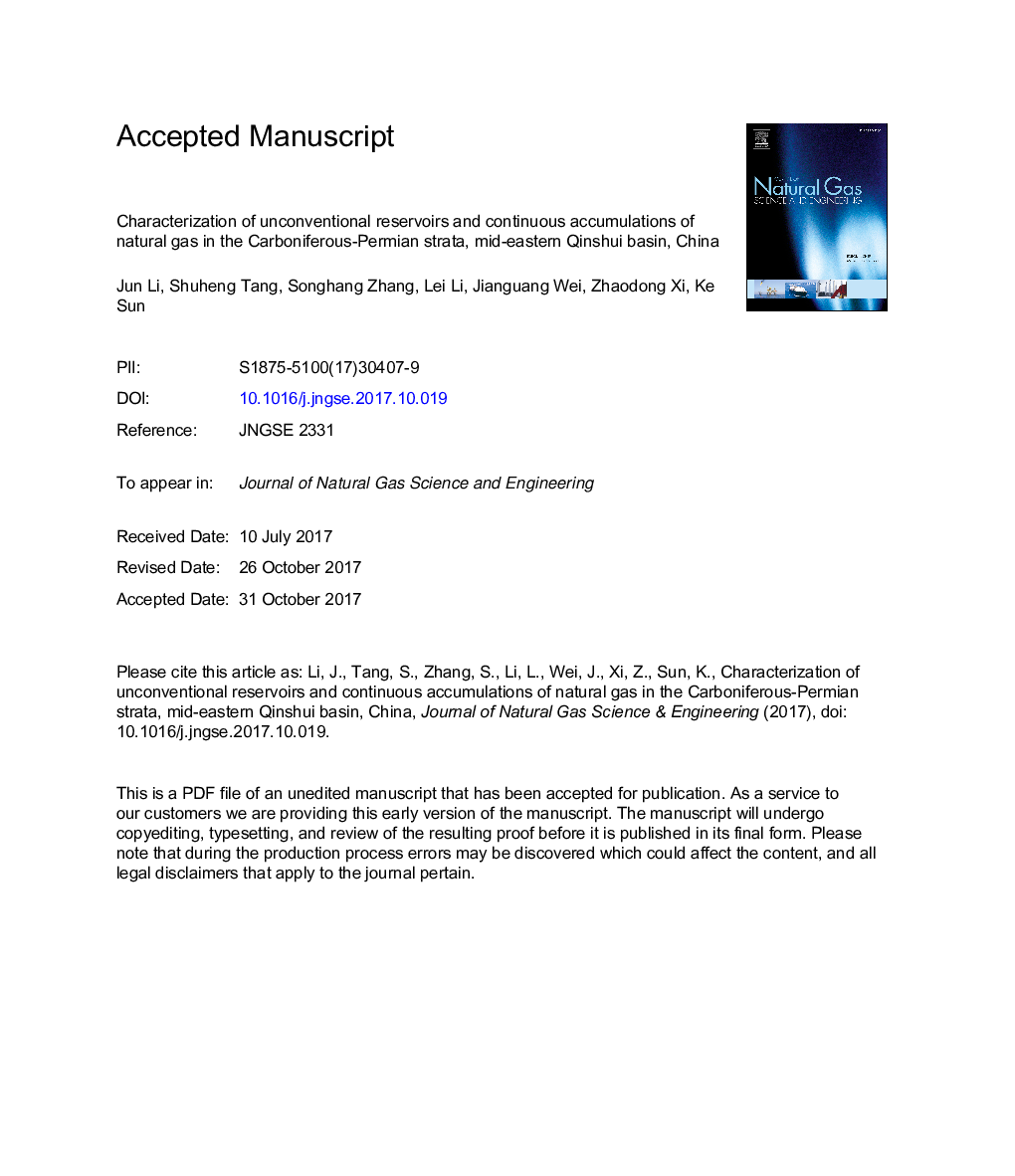| Article ID | Journal | Published Year | Pages | File Type |
|---|---|---|---|---|
| 8128519 | Journal of Natural Gas Science and Engineering | 2018 | 36 Pages |
Abstract
It is found that coal seams in this area are buried deeply, with the depth (mainly over 1000Â m) increasing from east to west, and the gas contents of the coal generally increasing to depths of 400-1600Â m, as a result of low-level temperature increment and high reservoir pressure. Dark shales and sandstones are widely distributed, with thicknesses of 12.2-65.9Â m and 5-35Â m in the Shanxi Formation and 40.5-131.7Â m and 5-50Â m in the Taiyuan Formation, respectively. Shales are rich in over-mature type II and type III organic matter and are mainly composed of clays (47%) and quartz (36%). Sandstones are mostly tight with low porosity (lower than 5% on average) and permeability (<1 mD) in the C3t-P1s strata, among which the Xiashihezi Formation shows relatively higher porosity and permeability than the underlying Shanxi and Taiyuan Formations. After the sedimentation of C3t-P1s coal-bearing strata, two main gas generation episodes and one continuous gas expulsion process occurred during the Late Triassic to Early Cretaceous. High mature source rocks (i.e., coals and shales) and widely distributed reservoirs (i.e., coals, shales, and sandstones) offer good associations for continuous gas accumulation, in which two types of gas accumulation patterns existed in the coal-bearing strata. The whole coal-bearing system in this area is favourable for co-exploration of unconventional natural gases in different gas reservoirs.
Related Topics
Physical Sciences and Engineering
Earth and Planetary Sciences
Earth and Planetary Sciences (General)
Authors
Jun Li, Shuheng Tang, Songhang Zhang, Lei Li, Jianguang Wei, Zhaodong Xi, Ke Sun,
